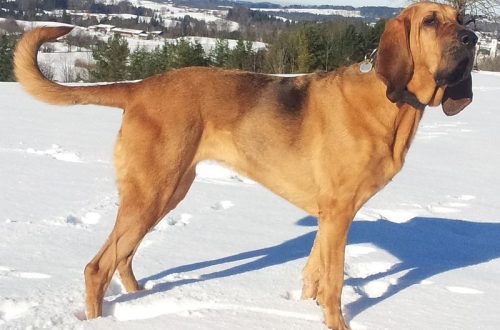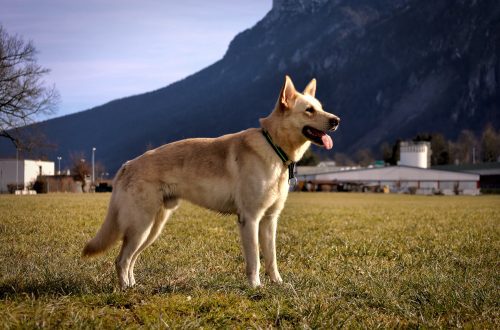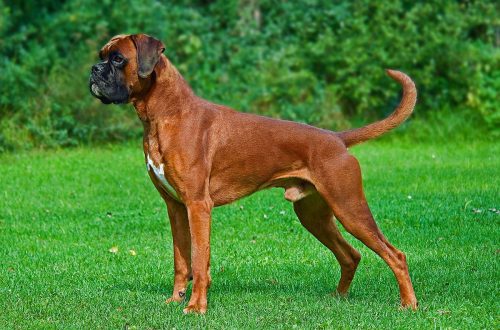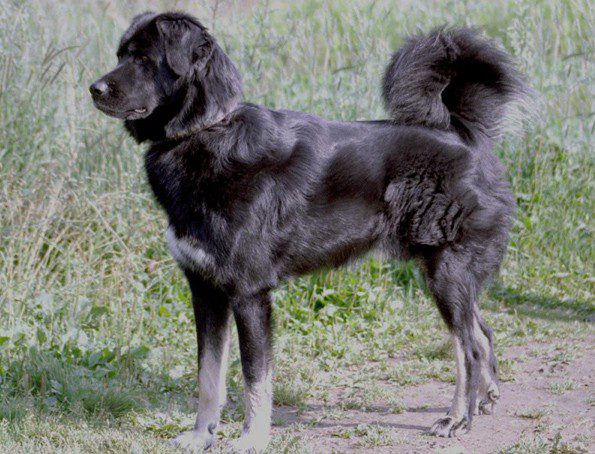
Tuvinian Shepherd
Contents
- Characteristics of Tuvinian Shepherd
- History of the breed Tuvinian Shepherd
- Description of the Tuvan Shepherd Dog breed
- Tuvinian Shepherd Character
- Tuvinian Shepherd Education and training
- Tuvinian Shepherd Maintenance and care
- Food for Tuvinian Shepherd
- Health of Tuvan Shepherd Dogs
- Photo of Tuvan Shepherd Dogs
- Who are Tuvan Shepherd Dogs for?
- How to choose a puppy of Tuvinian Shepherd?
- Photo of puppies of Tuvan shepherd dogs
- Price for Tuvan Shepherd Dogs
- Tuvinian Shepherd – Video
Characteristics of Tuvinian Shepherd
| Country of origin | Russia |
| The size | Large |
| Growth | 63–70 cm |
| Weight | 38–50 kg |
| Age | up to 16 years |
| FCI breed group | not recognized |
Brief information
- strong and loyal guard dogs;
- unpretentious in food, suitable for keeping in a private house;
- can be stubborn, need an owner with a strong character.
History of the breed Tuvinian Shepherd
The ancestors of the Tuvan Shepherd Dog are molossoid shepherd dogs. Modern Tibetan mastiffs also descended from them . In ancient times, animals guarded herds of yaks. From Tibet, yak breeding spread to Altai and came to Tuva along with dogs. When compared with other Tibetan breeds, the Tuvan Shepherd Dog retained the most qualities from its ancestors.
Over time, dogs have been adapted to a sharply continental climate through breeding and natural selection. Tuva shepherd dogs can feel good at critically low temperatures and do not suffer from intense heat due to the unique coat structure. It protects the animal from rain and snow. This made it possible to keep them in mountainous conditions. In such an area, the dogs led a semi-wild lifestyle. They hunted and provided for their own food. The diet of Tuvan shepherd dogs included various small rodents. If necessary, the dog could protect himself when meeting with a wolf, defeating him in a fight.
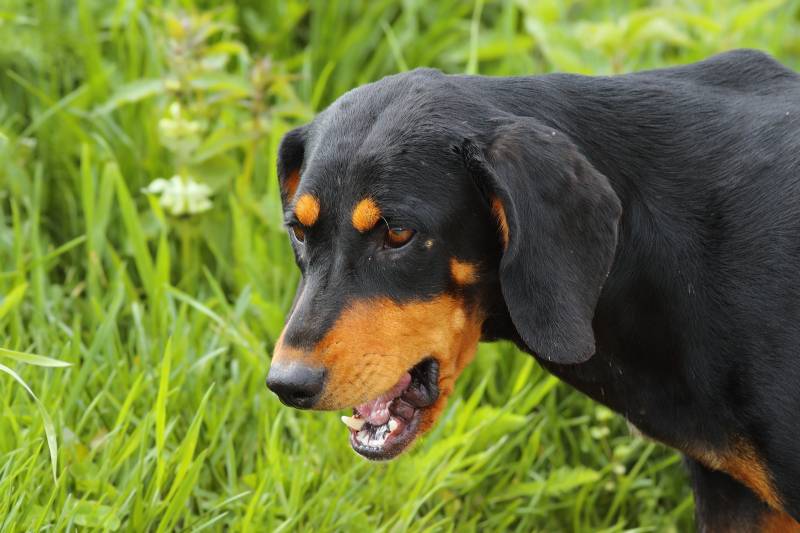
In 1944, Tuva became part of the Soviet Union, and an active struggle began against the nomadic lifestyle of the population. Everyone who was used to moving from place to place was forced to settle down and build settlements. It became simply impossible to keep such a number of dogs in them. Some of the Tuvan shepherd dogs were put on a chain, while the rest were shot. Smaller breeds from the central part of the republic began to appear in the settlements, which led to the process of crossbreeding. In the 60s, the population of Tuvan shepherd dogs decreased so much that it became critical. In addition, the breeding stock was lost. Small populations of Tuvan shepherd dogs survived only on the outskirts of Altai.
With the help of the government of the Republic of Tuva, measures were taken to revive the breed. Funds were allocated for this from the state treasury. In 2005, the first breeding show of Tuvan shepherd dogs was held, which was organized in Moscow.
Description of the Tuvan Shepherd Dog breed
The breed standard was not prescribed by the International Cynological Federation. The FCI did not recognize Tuvans, like many other breeds of domestic origin. The Tuvan Ovtcharka is a large dog, built in a very proportionate manner and requiring a lot of movement. Males at the withers reach 70 centimeters and weigh from 45 kilograms. Females – up to 58 centimeters and 40 kilograms, respectively.
Head
Head. Relatively small in relation to the body. Well muscled. The forehead is wide, with a transition from flat to more convex. The head is covered with short soft hair. The cheekbones are well developed but not prominent. Brow arcs, on the contrary, stand out. The occiput is not particularly pronounced, due to the strong muscles.
Muzzle. The transition from the forehead to the muzzle is pronounced. May be slightly longer than or equal to the skull. The muzzle is broad at the base, gradually tapering towards the nose. In profile, it has the shape of a rectangle, from above it looks like a blade.
Ears. They have the shape of a triangle, set high on the skull, hanging. They resemble the Latin letter V. On alert, the dog lifts them up and turns them slightly parallel to the muzzle. Outside covered with short hair, and inside – longer.
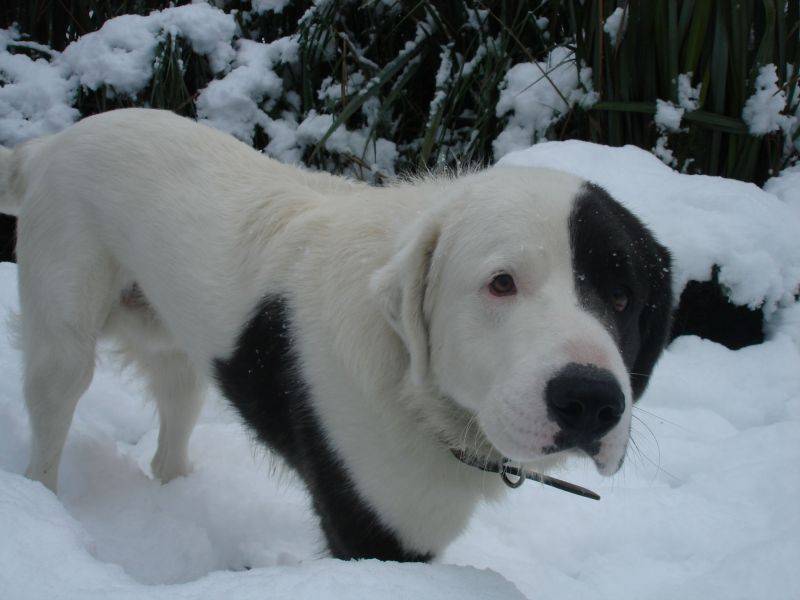
Nose. Straight and fairly wide. The nose is large and wide.
fall. Jaws are strong and well shaped. The lower one is wide, with well-developed muscles.
Teeth. They have the correct shape and large size. Fangs are snow-white, in full set. The bite may be straight or scissor.
Lips. They adhere well to the teeth, dense and fleshy. They have a dark color.
Eyes. Almond-shaped or slightly round, small in size. Set wide. The iris is brown. The eyelids fit tightly, sag a little.
Neck. Thick and powerful, medium length. It has a rounded cross section. Moderately arched, with a dewlap typical of the breed.
Frame
Frame. The withers are broad, more pronounced in males than in females. The height at the withers may be the same as the height at the rump or slightly exceed it. The back is strong and straight, of medium length. The loin is well muscled, short. The croup is of medium length, slightly sloping. The abdomen is tucked up.
Breast. Broad, widens even further behind the shoulder blades. Elongated, descends to the line of the elbows, sometimes even lower. The ribs are rounded. The front of the chest protrudes, the sternum is long. The dewlap is quite pronounced, due to which the front part of the body seems more massive.
Tail. Set on high, thickened at the base, covered with thick hair. In a calm state, it descends to the hocks and has the shape of a semicircle. In an alert state, the dog raises it, the tail twists into a ring. In males, the coat on it is thicker, with a “tassel” at the end.
Tuvinian Shepherd limbs
Front. If you look at the dog from the front, then the forelimbs look straight, parallel to each other, set quite wide. The length of the front leg to the elbow is the same length as half the height of the dog at the withers, sometimes it may slightly exceed it. The bones of the shoulders are set wide. Shoulder-scapular angle is one hundred degrees. The shoulders themselves are pressed to the chest, the processes of the shoulders are well developed. The forearms are straight, rounded and massive. The pasterns are shortened, strong, can be either straight or slightly inclined.
Rear. Straight and parallel. The knee and hock joints are pronounced. The thighs are muscular and well developed. The bones of the thighs are of medium length, stand with a barely noticeable slope. Legs are short. The calcaneus is elongated. Metatarsus set almost vertically, quite massive, but not long. The paws are round, dense, with long hair between the toes. There are dewclaws .
Tuvinian Shepherd Wool
The Tuva Shepherd Dog has a unique coat. It is able to protect the dog from heat up to +40 degrees and from frost up to -50. Wool is made up of several types of hair. The outer coat is long, elastic and silky, it protects against any precipitation, as it has water-repellent properties. A soft and dense short undercoat is very light, like fluff. It helps regulate body temperature, regardless of the environment.
To such unique properties, one more advantage is added – the wool of the Tuvan Shepherd Dog practically does not need care. Only during shedding should the dog be brushed to help shed the undercoat. Some craftswomen make yarn from the resulting wool, from which magnificent weightless things are obtained that have a healing and warming effect.
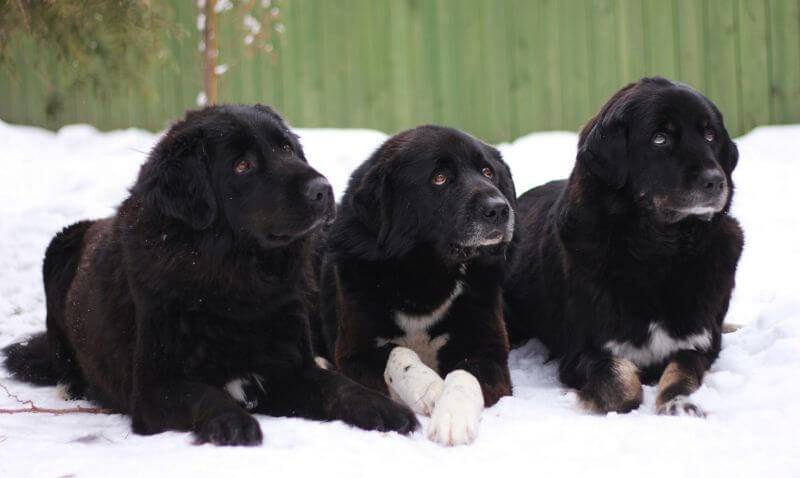
The integumentary hair forms a kind of “mane” in the withers area. There are “feathers” on the legs, and the tail ends with a “feather”. After rain, a dog just needs to shake himself off to become dry again. Such a special structure of wool is due to the fact that the ancestors of modern Tuvan shepherd dogs spent all their time outdoors in not the most favorable climatic conditions.
Tuvinian Shepherd colors
The color may be black or black and tan. Sometimes there are such shades:
- brown;
- yellow;
- sable;
- pale yellow;
- white;
- grey;
- white with dark spots.
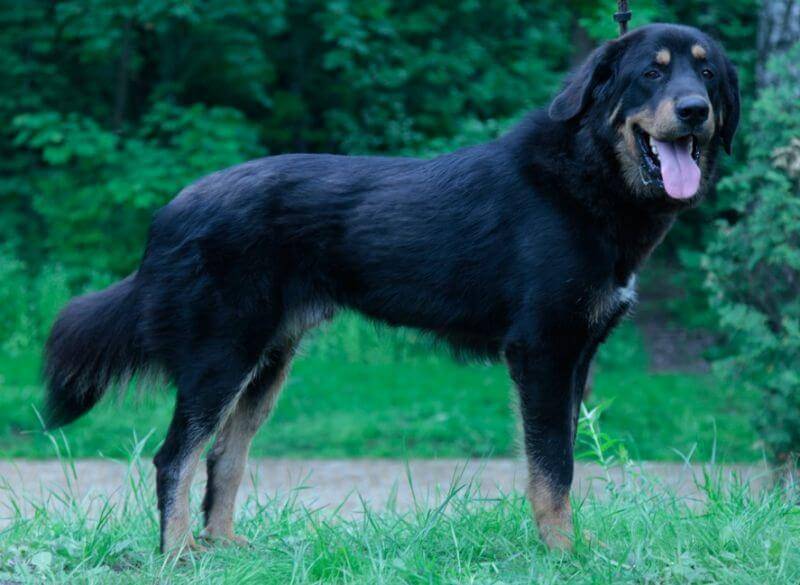
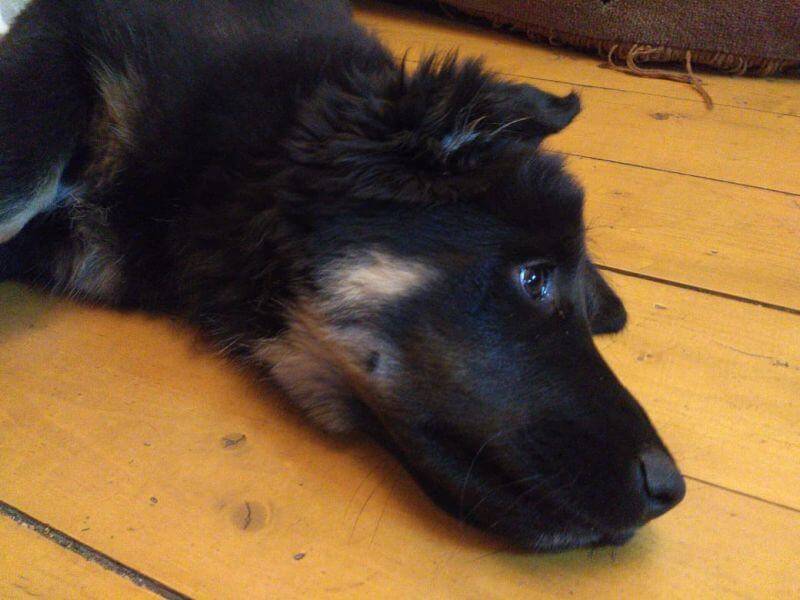
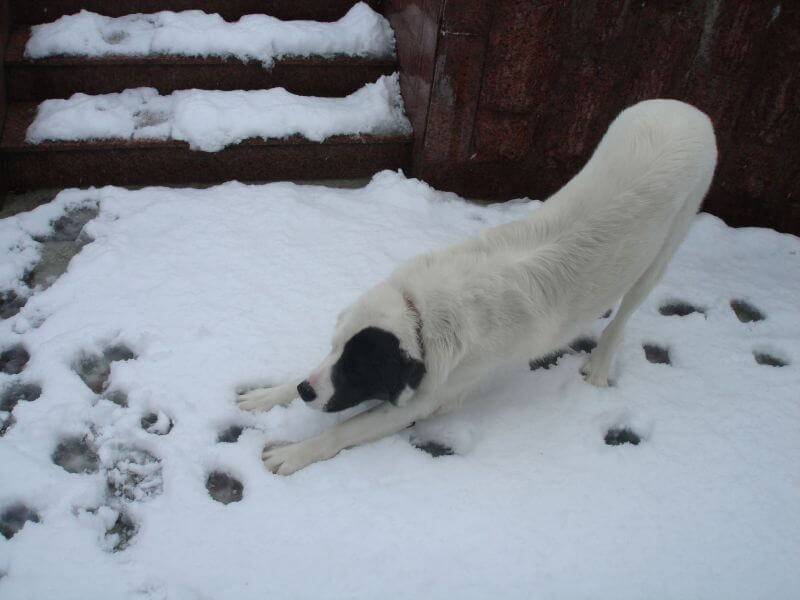
Spots may be present on the neck, taking the form of a collar, as well as on the chest, legs and end of the tail. Found on the back of the nose. Black dogs with white spots are described as tri-colored. Dark blotches may be present on white spots.
Tuvinian Shepherd Character
Tuva Shepherd Dogs are representatives of bright and independent dogs, with a decisive character. They do not have to wait for a command from the owner, they may well make decisions on their own. Therefore, you should not expect that the dog will “look into your mouth.” The head of the Tuvan Shepherd Dog is not required.
However, these dogs are quite balanced and calm. They observe the situation from the side, but keep a watchful eye so that at any moment they can react with lightning speed if something goes wrong. The dog is always ready for defense and protection.
Sometimes Tuva Shepherd Dogs can be stubborn. Therefore, when training, you need to take into account this trait and be persistent. Outsiders are treated coldly, but calmly, as long as they do not violate the boundaries of the dog or pose a threat to the family. A well-bred dog of this breed will never show groundless aggression and will not attack first. It has a high level of empathy, so it subtly feels the mood of the owner, is able to recognize his facial expressions and mood changes.
Tuva shepherd dogs do not show bright emotions due to their balanced character. But they are always devoted to “their” person and family, ready to help at any moment.
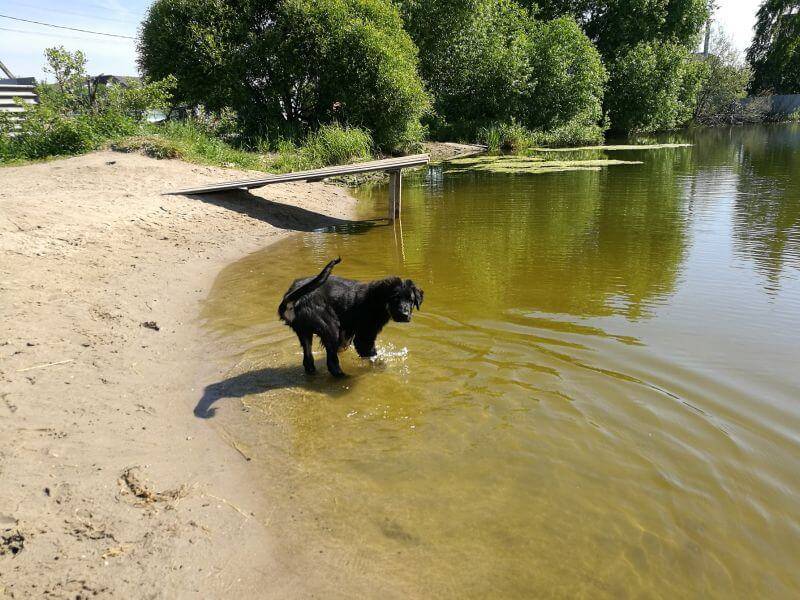
The Tuvan gets along well with other dogs or cats. Again, his poise allows him to perceive other animals calmly. But the owner needs to make sure that they do not violate the boundaries of the dog, otherwise conflicts and division of the territory are possible. Children are friendly, but they are not recognized as owners. They may be reluctant to participate in games.
The Tuvan Shepherd Dog will respect the owner, who will be able to earn trust from her puppyhood and put herself as a confident leader. Attention loves, like all dogs, but does not need constant guardianship. Shows tenderness and affection with his family. If a person allows it, he will gladly climb onto his knees.
Tuva Shepherd Dogs are ideal guard dogs. They have excellent hearing, they are attentive and quick-witted. Therefore, they are so often kept as pets in private homes. They are able to protect large areas without losing sight of a single meter. Tuvans guard not only the land and the house, but also the property of the family, including cars. Everything that is on their territory, they consider the property of their owner. It is noteworthy that even an untrained dog will do this, since guarding qualities literally flow in the blood of Tuvan shepherd dogs.
In no case should Tuvans be treated cruelly. Otherwise, in response to aggression, you will receive the same attitude. Build a trusting and respectful relationship with the dog, then he will obey you implicitly.
Tuvinian Shepherd Education and training
The Tuva Shepherd needs very early socialization . Therefore, the sooner you start introducing your dog to the outside world, the better. This can be done already from two to three months, when the puppy will have all the necessary vaccinations and he will pass the quarantine. The baby needs to be gradually accustomed to the loud sounds of the street, the noise of cars, crowded places. Then the dog will perceive such an environment as familiar. You will not have problems with fears or disobedience.
With any puppy in the process of training, you must show maximum patience and restraint. This is especially needed for a small Tuvan shepherd dog. Her headstrong and stubborn nature will often get on her nerves. But only a clear sequence of your actions and perseverance can give results.
Don’t raise your voice at the dog. And, moreover, do not use physical force. The times when dogs were recommended to be raised with “cuffs” are long gone. You must be strict and unshakable, but fair. Especially when it comes to a puppy. Don’t punish the animal. Almost always, dogs do not understand causal relationships that are clear to humans.
Start training with the simplest commands. They may well master a three-month-old puppy. These commands include the following:
- sit ;
- lie ;
- voice ;
- give paw ;
- place ;
- not possible .
To achieve a visible result, it will take more than one day and even more than one week. At the same time, classes must be carried out regularly, at least twice a day. They should not be long, since the nervous system of a puppy, like that of a small child, is not yet fully strengthened and formed, it will quickly get tired of stress. Make sure your dog is in a good mood before training, not sleepy or sick.
Be sure to reward your dog during training. It can be both affectionate words and strokes, and treats in the form of treats. Do not overdo it so as not to overfeed the dog. If the dog is fed dry food, then you can slightly reduce one of the feedings, and use the “saved” pellets to reward the dog for correctly executed commands.
Immediately set the limits of what is permitted with the Tuvan Shepherd Dog. It is almost impossible to retrain an adult dog if these boundaries are erased from it. Have you firmly decided that you can’t jump on the sofa? Then stand your ground to the bitter end and do not allow connivance. By making exceptions “in the mood”, you disorientate the puppy and undermine your authority in his eyes.
Tuvinian Shepherd Maintenance and care
For the Tuvan Shepherd Dog, the best place to keep would be a private house with a large area so that the dog can move freely around it. Then she can get enough physical activity so as not to experience discomfort.
The Tuva Shepherd Dog is not suitable for keeping on a chain. If you plan to keep your dog outdoors, she will need a spacious and comfortable enclosure with a booth. These breeds overwinter in the fresh air perfectly. Let the dog out of the aviary as often as possible. Ideally, she should be there only during sleep and rest, or when strangers are in the house.
In order for the Tuvan Shepherd Dog to feel comfortable and be healthy and well-groomed, you must adhere to the following rules:
- Comb the dog with a special comb with metal teeth. They are able to penetrate the undercoat, and not just “stroke” the top layer of hair. It is especially important to comb the dog during the molting period. Otherwise, a beautiful fur coat will get into tangles, which can only be cut off with a typewriter. The pet will look extremely untidy and unattractive. If possible, brush your dog during the off-season at least once a month. Pay special attention to hard-to-reach areas such as the tail, belly, groin, and neck.
- You need to bathe the dog as it gets dirty, but not more than once a month. Be sure to use special shampoos and balms for this. Those that are intended for humans are completely unsuitable for dogs. They have a different PH, so the dog may experience allergic reactions, skin peeling and hair loss. If the dog got dirty in the mud or bathed in an open pond, then you can simply wash it with running water, without using shampoo.
- Treat your dog for parasites regularly. From fleas and ticks – in early spring, repeating the treatment every month. From helminths – once a quarter.
- Ears and eyes should be cleaned of excess secretions once a week. To do this, use cotton pads or swabs soaked in animal care lotion. You can buy it at a veterinary clinic or store.
- Nails are trimmed as they grow. They must not be allowed to be too long, otherwise it threatens with herbs. It is a mistake to think that dogs that are often on the street can grind their claws, for example, on asphalt. They need to be trimmed regularly, and the puppy should be taught to the procedure from childhood, using a special nail cutter.
- Plaque should be removed from the teeth as it accumulates. You can clean with a brush and a special paste, or you can give your pet dental bones. When the dog chews on them, they will remove plaque from his teeth. In an advanced case, you can contact the veterinary clinic, where the doctor will remove plaque using ultrasound.
- The Tuva Shepherd Dog needs to be loaded with running, mental activities and physical exercises. In addition, the dog is not recommended to be left alone for a long time. Spend more time with her so you don’t lose that special “bond” with your friend.
- So that the dog can occupy itself in your absence, make sure that it has toys. It can be rubber bones, ropes and so on. Gnawing on them, the dog calms down and relaxes.
Despite its unique coat, the Tuvan Shepherd Dog should not be left in the sun for a long time in the summer. Her booth must be in the shade, and a bowl of clean water should be nearby.
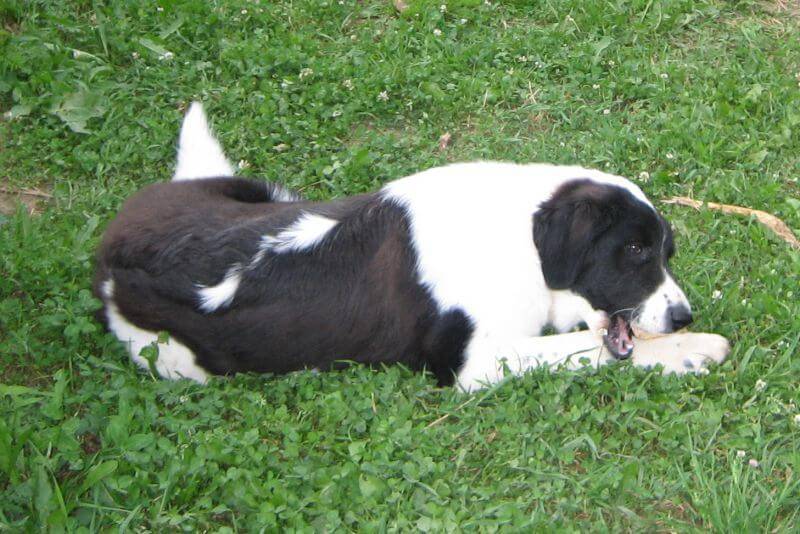
Food for Tuvinian Shepherd
Modern wet and dry food contains all the necessary vitamins and minerals that are needed for the health of the dog. That is why veterinarians advise feeding pets with just such a balanced diet.
Premium and super premium class food is suitable for the Tuvan Shepherd Dog. The fraction can be quite large. If the dog does not move much, then you need to not only cut the diet, but also choose a food with a low carbohydrate content. Otherwise, the dog will face obesity. For active dogs that take part in competitions and train a lot, you will need a higher calorie diet.
Dosing food is quite simple. Each manufacturer indicates the norms on the packaging. To choose the right amount of food for your pet, you need to know its weight. A serving can be measured in grams or cups.
If you feed the Tuvan Shepherd Dog with high-quality food, then there is no need to take additional vitamins. But clean water should always be freely available to the dog. Dry food has virtually no moisture, like meat or other foods. Therefore, the pet will often need to make up for the lack of fluid in the body.
When feeding, be sure to measure the right amount of food at one time. If you put more in the bowl, then the Tuvan Shepherd Dog will eat everything offered to her. Unlike cats, dogs have poor control over satiety, so they can fill up “to satiety”. This leads to overeating, which is detrimental to the health of the animal.
You can feed the Tuvan Shepherd Dog with both dry and wet food. And it is best to use a combination of them .
Industrial feed is not only a safe and balanced diet for your pet. With their help, you can carry out the prevention of diseases and even treat some of them. So, for example, there are separate lines for allergy sufferers, dogs with kidney failure, digestive disorders, diseases of the genitourinary system, and so on.
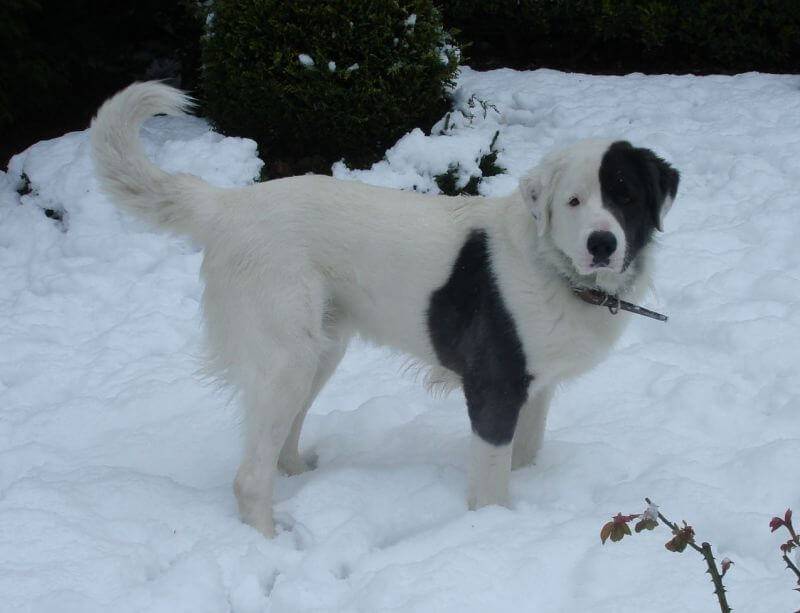
When a dog reaches old age, its diet needs to be reconsidered. It is better to choose a special food for the “oldies”, as well as reduce the dosage.
When purchasing a puppy, take an interest in what kind of feed he grew up with breeders. If the dog had no health problems, then continue to feed him. For puppies, dog food manufacturers have separate lines. These feeds are enriched with calcium and the necessary components for the growth and development of strong teeth and bones. As soon as the puppy grows up, you can give him food for adult dogs, a larger fraction.
It is very important to observe the feeding regimen of the Tuvan Shepherd Dog. An adult dog is fed twice a day at the same time. The daily dose that is recommended to the animal should be divided into two parts and given in the morning and evening. If the dog did not eat the portion completely or ignored it altogether, do not leave the food in the bowl. Remove the food before the next feeding. The reason for this behavior may be the following:
- ailments or diseases of a different nature;
- the dog did not have time to get hungry;
- the animal does not like a particular type of food.
If the Tuva Shepherd Dog lives indoors, and is not constantly on the street, then you need to feed it after a walk. This will help to avoid health problems such as gastric volvulus. It can be deadly for a dog. Especially large breeds of dogs are prone to this, to which the Tuvan shepherd dog belongs.
The dog does not need variety. On the contrary, it can only bring harm. Unlike humans, dogs do not suffer from eating the same food year after year. If the dog is healthy and active, it has a shiny coat and strong teeth, then there is no need for any other food. But frequent changes in diet can lead to food allergies and problems with the gastrointestinal tract.
Health of Tuvan Shepherd Dogs
Tuva Shepherd Dogs are distinguished by good health. They have excellent immunity, so they rarely get sick. If you properly care for a pet, then its life expectancy will be from 12 to 16 years.
The Tuvan Shepherd Dog, like other breeds, has a predisposition to a certain number of diseases. These include:
- joint dysplasia, as in all large breeds that weigh a lot;
- endocrine system disorders;
- food allergies;
- diseases of the organs of vision and deterioration of its sharpness in old age.
Tuva shepherd dogs are used to living in rather harsh conditions. And they owe their strong immunity to their ancestors, who slept in the snow and did not suffer from colds. But, if you notice malaise, lethargy or weakness in your pet, then it is better not to delay and contact your veterinarian immediately.
In females of the Tuvan shepherd dog, the first estrus begins when they reach one year of age. It lasts 21 days and happens only once a year. But you can only have bitches after they are two years old. The most successful days for mating is the period from 11 to 17 days from the start of estrus.
Before mating, dogs are walked, but feeding is skipped. It is better to mate dogs on the territory of a male. After a day or two, a control mating is carried out.
Pregnancy in bitches lasts 60-65 days. There can be 4-5 puppies in a litter, no more, since Tuva shepherd dogs are infertile breeds.
Photo of Tuvan Shepherd Dogs

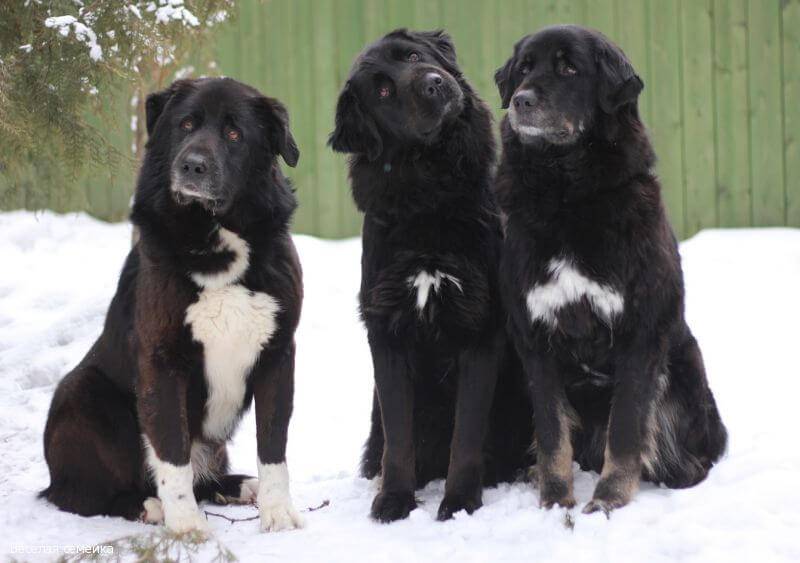
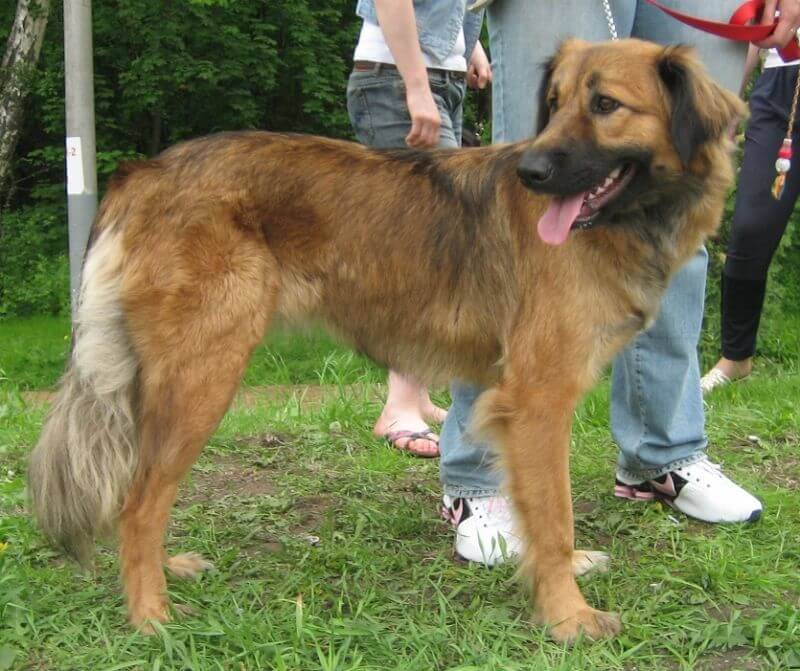
Who are Tuvan Shepherd Dogs for?
The Tuva Shepherd Dog will suit a balanced and consistent person. Since the dog requires perseverance and endurance in education, it must recognize the authority of the owner. Only a person with a strong character can win it.
The Tuvan Shepherd Dog is not suitable for hysterical persons prone to aggression. With such a host, she can turn into an uncontrollable monster. And a dog that weighs about 50 kilograms must be well-mannered. Otherwise, it will be dangerous for others and even for the owner himself.
You should not start a Tuvan Shepherd Dog as the first dog. An inexperienced owner may simply not be able to cope with training and education. The dog will not be able to show his best qualities. Such dogs often and undeservedly end up in shelters or on the street through no fault of their own.
It is better if a more mature and mature person becomes the owner. This is definitely not the breed of dog that you can get and not deal with it. The owner should have enough time not only to walk with the pet, but also to train it.
You should also consider your financial capabilities. Such a large dog, like the Tuvan Shepherd Dog, needs a good balanced diet. This will incur some costs, as the portions will be rather big.
Not the best option for a Tuvan Shepherd Dog would be an owner who lives in a small apartment. The dog will be cramped in there. The ideal area would be a private house. If you get a Tuvan Shepherd Dog in an apartment, then you should be ready to give it three to four hours for active games on the street.
The Tuvan Shepherd Dog has a long coat with an undercoat, so a lot of hair falls out, especially during the molting period. This breed is not recommended for those who suffer from allergies. The apartment will have to be cleaned more often, as wool will accumulate on the floor, furniture and clothes.
How to choose a puppy of Tuvinian Shepherd?
In Moscow and its environs, Tuvan Shepherd Dogs are not as common as in their immediate homeland. It is in Tuva that most of the nurseries are located. If you want to purchase a purebred Tuvan Shepherd puppy with an ideal pedigree, then the best solution would be to go to this region for him.
Do not wean a puppy from a bitch that has not yet reached the age of two months. The baby must have a veterinary passport and all necessary vaccinations by age.
Choose the largest and smartest puppy from the litter. He shouldn’t be cowardly. When meeting you, the puppy should show curiosity and come up to sniff. Not the best option would be a timid dog that hides in a corner out of fear.
Do not buy a dog from your hands. It’s like playing roulette – no one knows what will grow out of it. Only eminent kennels that have been breeding Tuvan shepherd dogs for more than a year can guarantee you a purebred animal. In addition, unverified breeders can “slip” a sick or defective puppy to a person who does not understand dogs.
Photo of puppies of Tuvan shepherd dogs
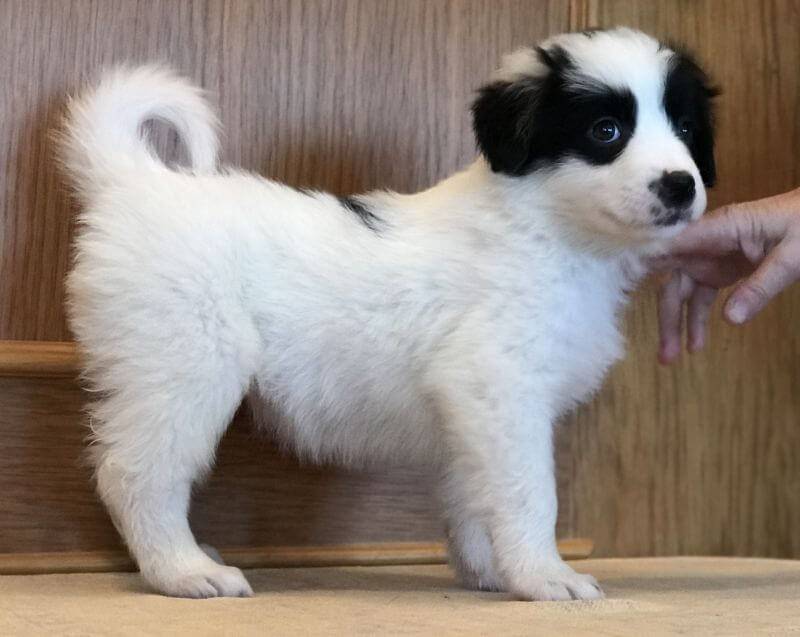
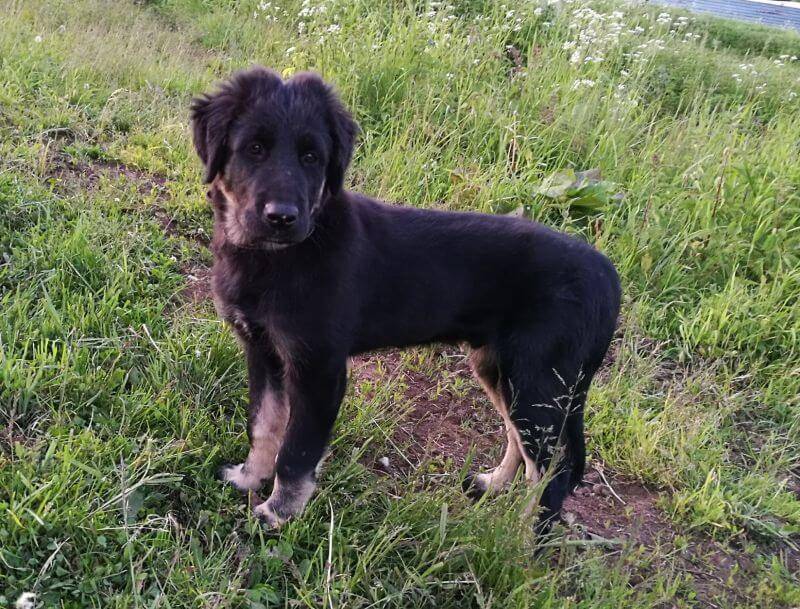
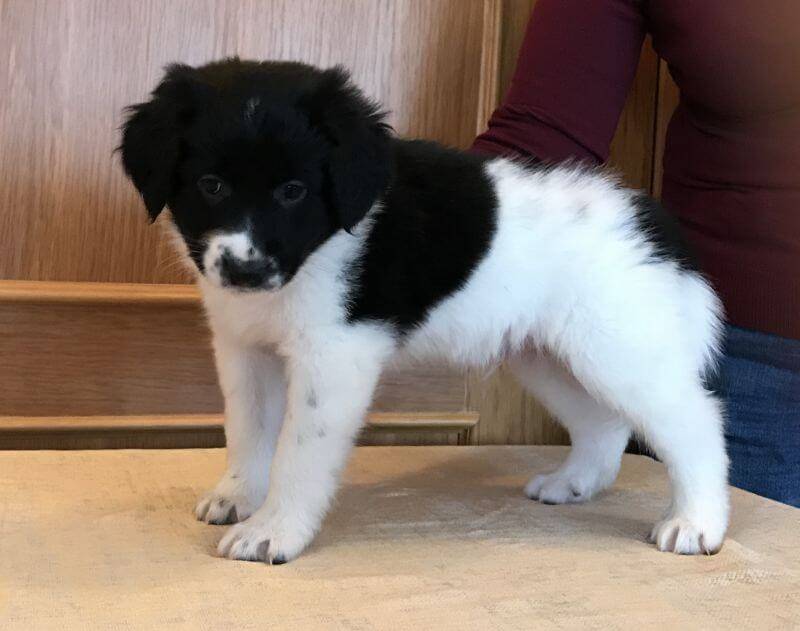
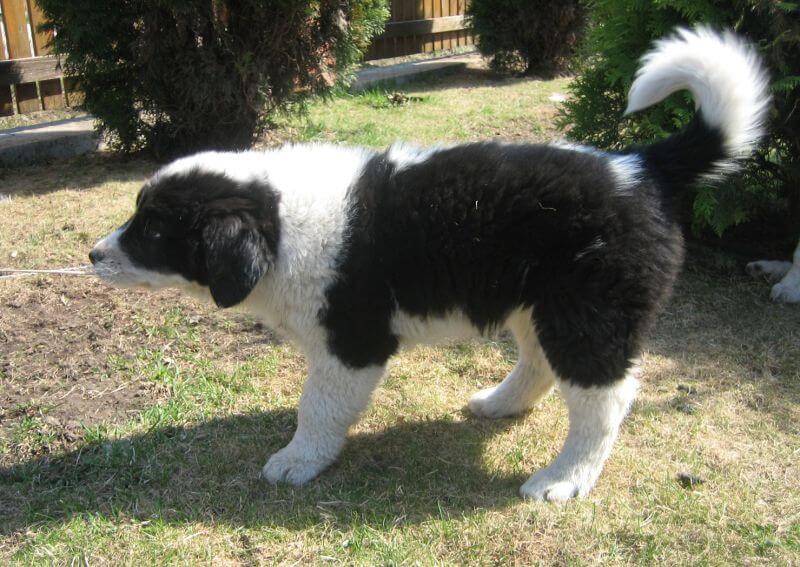
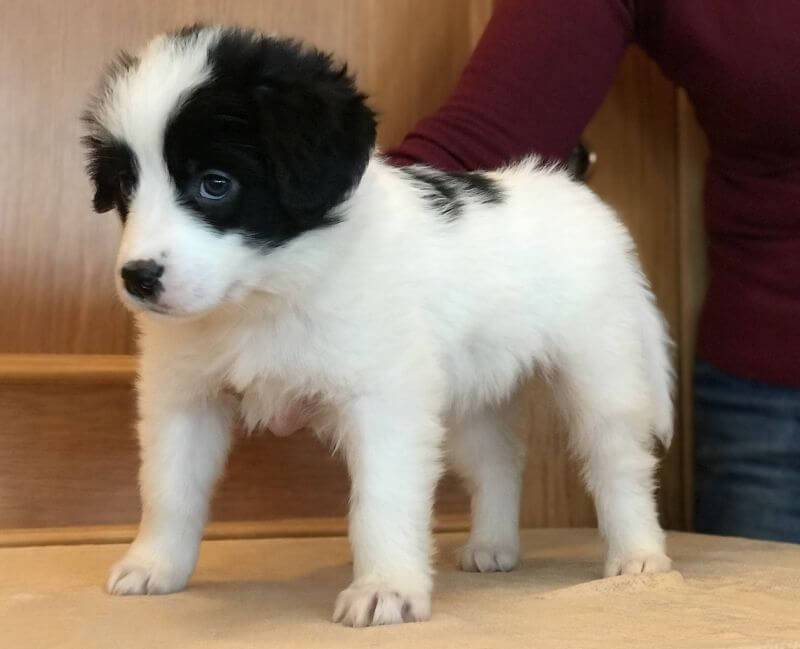
Price for Tuvan Shepherd Dogs
The price of Tuvan shepherd puppies varies from 350-700$. The cost depends on the pedigree and the uniqueness of the blood.
Tuvinian Shepherd – Video



